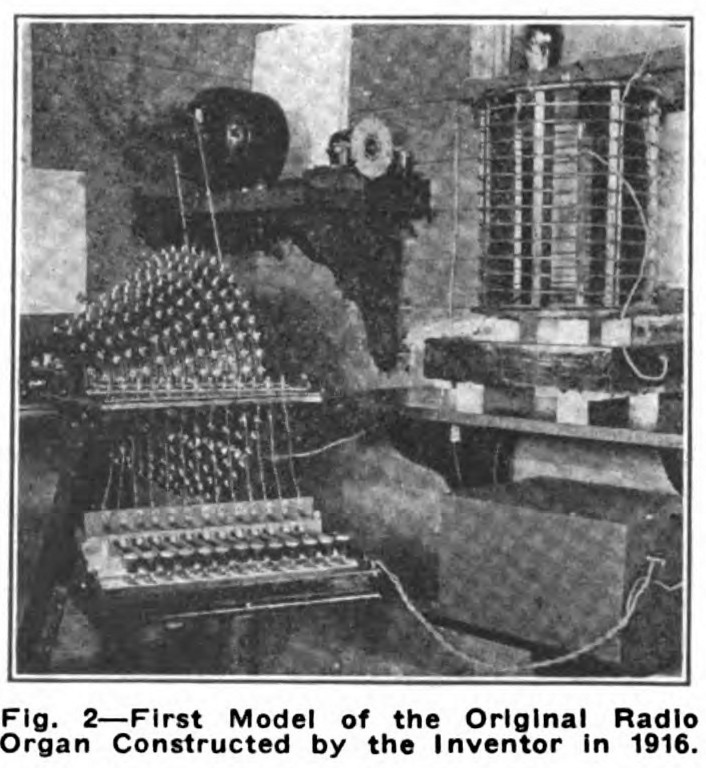📡🧠 Wireless Organ
Georges Désilets
Georges Désilets was born to farming parents in 1866 in Nicolet, Quebec. As a young adult he joined the seminary. By the age of 27 in July of 1893 he was ordained into the ministry. As part of the work of his spiritual vocation he began to teach astronomy, chemistry and physics at the seminary. Later he focused his instructional efforts on music and natural history. Around this time it was very common for those in the clergy to be involved in scientific and technological pursuits as hobbyists. Supported by a church or parish these men were often set up in well appointed homes, had access to books, and the prime resource of any hobbyist: free time to tinker.
First Version
The first version of the instrument had a short drum that delivered a 1 1/2 octave range, Désilets later attached a 4 octave touch sensitive organ keyboard to a much longer spark-drum and attached a foot controlled rheostat to allow expression control. To produce higher and lower octaves (without the complexity and scale of creating a longer spark-drum) the motor speed could be varied to double or half the speed to deliver the required pitch change. Semitones were achieved by a gearing mechanism:
“…semitones are obtained in the preferred form by a set of rows exactly corresponding to the rows 27 30, 36, 40 and 45 traveling at a rate -of speed 1/20 less than the rotor 1. For example, if the rotor 1 is revolving at 500 r. p. m.,.the semitone rows must revolve at 47 5 r. p. m. The different speeds of rotation may be obtained by gearing”

The instrument was capable of playing polyphonically if the input charge was boosted to allow multiple spark generation:
“…Obviously, in order to produce chords, it is only necessary to supply a current of sufficient intensity to permit of a plurality of different sets of sparks at the same time consequent upon the pressure of the corresponding number of keys.”
Désilets radio station was closed during the 19-14-18 war – the Canadian government closed all non-military radio stations for security reasons –and his wave-organ silenced. When the station reopened, the invention and popularity of the vacuum tube by Lee De Forest and others had made his spark-generating experiments obsolete.
Next topic: Optophonic Piano
Sources
Wikipedia / 120years.net / Sothismedias